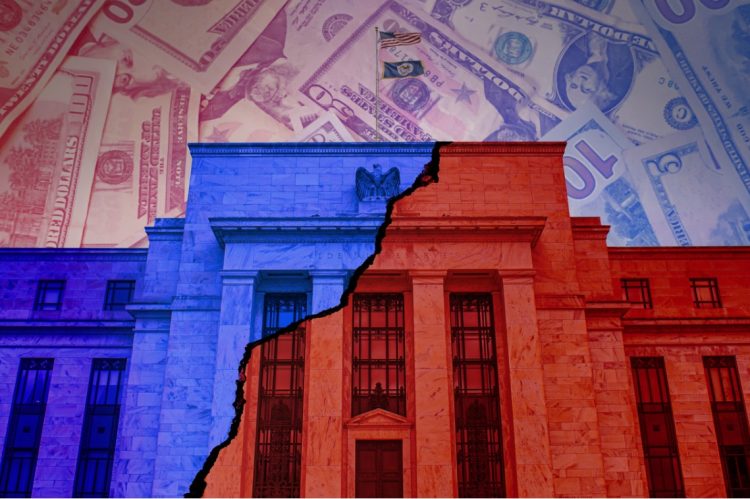Interest rates will remain unchanged for the second month in a row, according to the latest press conference from the Federal Reserve’s Federal Open Market Committee (FOMC).
Following no change in rates in November, the Fed found that recent economic signs—such as a continued slowing in the latest Consumer Price Index reading, decreasing mortgage rates and a low 3.7% unemployment rate—are still not enough to warrant any current change.
The official statement from the FOMC read: “The Committee seeks to achieve maximum employment and inflation at the rate of 2% over the longer run. In support of these goals, the Committee decided to maintain the target range for the federal funds rate at 5.25% to 5.5%. The Committee will continue to assess additional information and its implications for monetary policy.”
“Inflation has eased from its highs, and this has come without a significant increase in unemployment,” explained Fed Chair Jerome Powell. “But, inflation is still too high, ongoing progress in bringing it down is not assured, and the path forward is uncertain.”
Powell stated that economic activity has slowed from what was seen in Q3. However, he continued on to say that GDP is currently on track to expand 2.5% for 2023 as a whole due to consumer demand and better supply conditions.
“The market is tight, but supply and demand conditions continue to come into better balance,” he explained. “The lower inflation readings over the past several months are welcome, but we will need to see further evidence to build confidence that inflation is moving down sustainably toward our goal.”
Powell stated that while the committee feels that “we are at or near the peak rate for this cycle,” the possibility of further hikes is not off the table just yet. He also mentioned that the committee has discussed the future potential for scaling back their restrictive policy, but again has yet to make any decisions.
“It is far too early to declare victory,” Powell concluded.
What the experts have to say
CoreLogic Chief Economist Dr. Selma Hepp commented, “The Federal Reserve’s decision today marks two important milestones. The first is that the Fed confirms that it believes its actions helped tame inflation while also preventing the economy from slipping into recession. The second is that housing can begin the slow process of returning to a more normalized rate environment. However, we expect it will be several months before housing returns to smoother sailing, and there may yet be some choppy waters ahead.”
Mortgage Bankers Association’s SVP and Chief Economist Mike Fratantoni commented, “The FOMC held rates steady as forecasters had expected. The news from this meeting came from the FOMC’s projections regarding the direction of the economy. As noted in its statement, while inflation has eased, it remains ‘elevated,’ so policy must remain restrictive for now to bring inflation down further. The FOMC projections show a faster pace of rate cuts in 2024. While the projections don’t show much of a change in the committee’s expectations regarding economic growth or the job market, they do recognize the faster pace at which inflation has declined in 2023 and see further slowing back to the 2% target.
Fratantoni concluded, “Additional rate hikes no longer appear to be part of the conversation. It is all about the pace of cuts from here. This is good news for the housing and mortgage markets. We expect that this path for monetary policy should support further declines in mortgage rates, just in time for the spring housing market. We are forecasting modest growth in new and existing home sales in 2024, supporting growth in purchase originations, following an extraordinarily slow 2023.”
Realtor.com Chief Economist Danielle Hale commented, “The Federal Reserve’s Open Market Committee, the rate-setting body that meets roughly eight times per year, voted to hold the short-term policy rate steady at a range of 5.25% to 5.5%. Despite an uptick in hiring and drop in the unemployment rate in November, the bigger trend has been slowing labor market momentum. Similarly, the latest consumer price index data shows that overall inflation slowed even though core inflation remains stubbornly high. On balance, the Fed has made progress against inflation, and the policy stance remains restrictive. In its statement, the Fed acknowledged this progress while highlighting that the job is not yet finished, noting that ‘inflation has eased over the past year but remains elevated.’”
Hale concluded, “In the press conference following the November meeting, Chair Powell noted that the Committee was looking to build confidence in the idea that policy was restrictive enough. Markets suggest that investors are already confident in this outcome. Financial conditions have eased since the FOMC last gathered, with the benchmark 10-year treasury yield dipping from 4.8% to 4.2% in the inter-meeting period. At the same time, futures markets are pricing in a higher likelihood of more rate hikes by the end of 2024. The Fed has also weighed in, publishing its Summary of Economic Projections, which showed a lower median expectation for the Fed Funds rate at the end of 2024, now 4.6%, down from 5.1% in September. Most of the Fed’s other projections such as for economic growth, unemployment and inflation were little changed beyond 2023.”













The Fed hasn’t held rates steady for just two months. The last rate hike was in July, making it five months across now the last three policy meetings.
https://www.timtrainumproperties.com